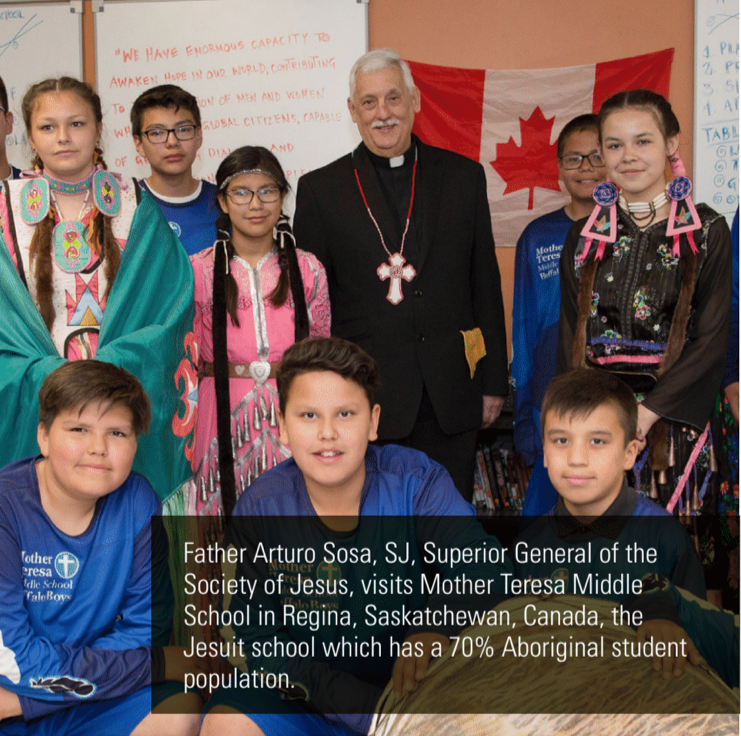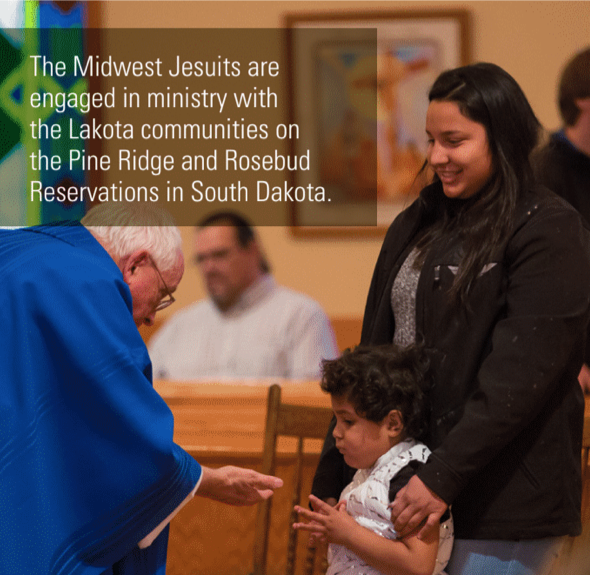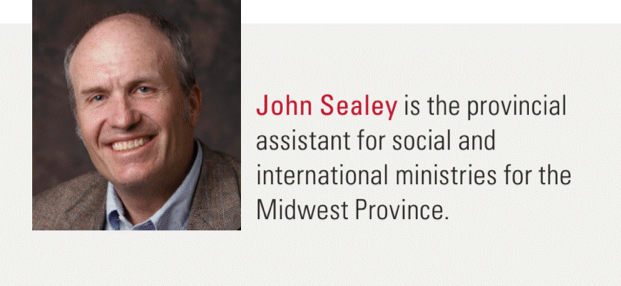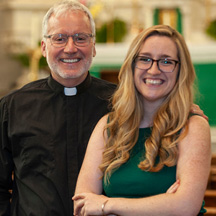
By John Sealey
Each morning, Rosella Kinoshameg prays for all the people she will meet that day and for the safety of each type of animal that may potentially cross her path over the many miles she will drive. Rosella is a registered nurse and pastoral leader from the Wikwemikong Unceded Indian Reserve on Manitoulin Island, (Lake Huron) Ontario.
Much of the earliest Jesuit work in the Americas was with Indigenous communities dating back to the 16th century, soon after the Society was founded. Jesuits were often the only force standing between Indigenous people and slavery as depicted in the film, The Mission.


- Inequality is the monster in our world … it is untamed and growing both within and across nations.
- When democracies weaken, people are weakened.
- Preservation of cultures is the preservation of God. The face of God is diversity … consider the Trinity.
- Inculturation is the first step … We need to move from our own comfortable house to learn to live in the houses of others.
- How can we make history a memory and not a stone that paralyzes us?
- Reconciliation can be hurtful like a salt in a wound, but salt also purifies and heals. Reconciliation is our mission today and we work in a wounded world.
- This is a hopeful moment … 50 years is nothing in terms of implementing Vatican II … we are just beginning to see the first fruits …we are on our way to a church of the laity. The Gospel doesn’t talk about pastors and church buildings, but of people, relationships, and service.
- Trusting God is trusting people for it is people who carry out God’s work.
Earth Prayer
Grandfather, Great Spirit, once more behold me on Earth and lean to hear my feeble voice. You lived first, and you are older than all need, older than all prayer. All things belong to you—the two-legged, the four-legged, the wings of the air, and all green things that live.
You have set the powers of the four quarters of the Earth to cross each other. You have made me cross the good road and road of difficulties, and where they cross, the place is holy. Day in, day out, forevermore, you are the life of things.
Hey! Lean to hear my feeble voice.
At the center of the sacred hoop
With tears running, O Great Spirit, my Grandfather,
With running eyes I must say
The tree has never bloomed.
Here I stand, and the tree is withered.
Again, I recall the great vision you gave me.
It may be that some little root of the sacred tree still lives.
Nourish it then
That it may leaf
And bloom
And fill with singing birds!
Hear me, that the people may once again
Find the good road
And the shielding tree.
~Nicholas Black Elk, Lakota holy man and Catholic catechist whose canonization cause opened Nov. 2, 2017
In his prepared remarks to Fr. General, Fr. Patrick Twohy, SJ, observed, “The road we are now on as Indigenous peoples and Jesuits is a road created and sustained by the profound and lasting friendships in a way we continually learn from one another and try to discern the road forward together. We also acknowledge that our past journey together has often been painful and difficult. The ongoing colonial invasion that continues to gravely wound Indigenous Peoples and their lands and waters must continue to be addressed not only by Indigenous Peoples but also by Jesuit universities, high schools, parishes, and in all spheres of public discourse, seeking understanding, compassion, and greater solidarity.”
|
|
| “It must be said that today we are more aware of the significance of the richness of the indigenous peoples, especially when, both politically and culturally, other forces tend to suppress them even more through globalization conceived as a "sphere," a globalization where everything becomes standardized. Today, our prophetic audacity, our consciousness, must be on the side of inculturation. And our image of globalization should not be the sphere, but the polyhedron. I like the geometric figure of the polyhedron, because it is one but has different faces. It expresses how unity is created while preserving the identities of the peoples, of the persons, of the cultures. That is the richness that today we have to give to the process of globalization, because otherwise it is homogenizing and destructive.” Pope Francis to the delegates of GC 36. |

Return to the Jesuits Magazine Fall/Winter 2018 Magazine Index
